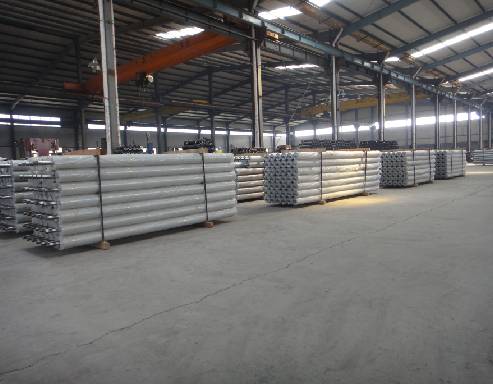 Afrikaans
Afrikaans  Albanian
Albanian  Amharic
Amharic  Arabic
Arabic  Armenian
Armenian  Azerbaijani
Azerbaijani  Basque
Basque  Belarusian
Belarusian  Bengali
Bengali  Bosnian
Bosnian  Bulgarian
Bulgarian  Catalan
Catalan  Cebuano
Cebuano  Corsican
Corsican  Croatian
Croatian  Czech
Czech  Danish
Danish  Dutch
Dutch  English
English  Esperanto
Esperanto  Estonian
Estonian  Finnish
Finnish  French
French  Frisian
Frisian  Galician
Galician  Georgian
Georgian  German
German  Greek
Greek  Gujarati
Gujarati  Haitian Creole
Haitian Creole  hausa
hausa  hawaiian
hawaiian  Hebrew
Hebrew  Hindi
Hindi  Miao
Miao  Hungarian
Hungarian  Icelandic
Icelandic  igbo
igbo  Indonesian
Indonesian  irish
irish  Italian
Italian  Japanese
Japanese  Javanese
Javanese  Kannada
Kannada  kazakh
kazakh  Khmer
Khmer  Rwandese
Rwandese  Korean
Korean  Kurdish
Kurdish  Kyrgyz
Kyrgyz  Lao
Lao  Latin
Latin  Latvian
Latvian  Lithuanian
Lithuanian  Luxembourgish
Luxembourgish  Macedonian
Macedonian  Malgashi
Malgashi  Malay
Malay  Malayalam
Malayalam  Maltese
Maltese  Maori
Maori  Marathi
Marathi  Mongolian
Mongolian  Myanmar
Myanmar  Nepali
Nepali  Norwegian
Norwegian  Norwegian
Norwegian  Occitan
Occitan  Pashto
Pashto  Persian
Persian  Polish
Polish  Portuguese
Portuguese  Punjabi
Punjabi  Romanian
Romanian  Russian
Russian  Samoan
Samoan  Scottish Gaelic
Scottish Gaelic  Serbian
Serbian  Sesotho
Sesotho  Shona
Shona  Sindhi
Sindhi  Sinhala
Sinhala  Slovak
Slovak  Slovenian
Slovenian  Somali
Somali  Spanish
Spanish  Sundanese
Sundanese  Swahili
Swahili  Swedish
Swedish  Tagalog
Tagalog  Tajik
Tajik  Tamil
Tamil  Tatar
Tatar  Telugu
Telugu  Thai
Thai  Turkish
Turkish  Turkmen
Turkmen  Ukrainian
Ukrainian  Urdu
Urdu  Uighur
Uighur  Uzbek
Uzbek  Vietnamese
Vietnamese  Welsh
Welsh  Bantu
Bantu  Yiddish
Yiddish  Yoruba
Yoruba  Zulu
Zulu concave guide roller
The Importance of Concave Guide Roller in Modern Manufacturing
In the dynamic landscape of modern manufacturing, the efficiency of production lines plays a critical role in determining the overall effectiveness of operations. Among the various components that contribute to this efficiency, the concave guide roller stands out as a pivotal element. This article explores the function, benefits, and applications of concave guide rollers in various industrial settings.
Concave guide rollers are specialized equipment designed to guide and support materials as they navigate through different stages of production. Their unique concave shape allows them to maintain the alignment of products, reducing the likelihood of misdirection or damage during transportation. Unlike flat rollers, concave rollers have an inward curvature that keeps objects centered, making them especially useful in processes where precision is paramount.
One of the primary advantages of concave guide rollers is their ability to enhance operational efficiency. By ensuring that materials move smoothly along the production line, these rollers minimize friction, which can lead to wear and tear on both the materials and the machinery. This not only extends the lifespan of the equipment but also reduces maintenance costs associated with frequent repairs or replacements. In addition, by optimizing the flow of materials, manufacturers can significantly improve the speed of production, resulting in higher output rates.
concave guide roller

Another notable benefit of concave guide rollers is their versatility. They can be utilized in various applications, ranging from conveyor systems to packaging machinery. In industries such as automotive manufacturing, food processing, and pharmaceuticals, concave guide rollers play an essential role in maintaining product integrity. For example, in a food processing line, these rollers help secure packages to prevent spills or contamination, thereby ensuring compliance with safety standards.
Furthermore, the use of concave guide rollers contributes to safety in the workplace. Misalignment of materials can lead to accidents, such as machinery jams or product spills. By providing reliable support and guiding mechanics, concave guide rollers help mitigate these risks, creating a safer environment for workers. This focus on safety not only protects employees but also enhances overall productivity by reducing downtime caused by accidents or equipment failures.
In terms of design and material selection, concave guide rollers are typically constructed from durable materials that can withstand the wear and tear associated with rigorous industrial environments. Options such as rubber, polyurethane, and steel provide a range of choices tailored to the specific needs of different manufacturing processes. Additionally, the design of the rollers can be customized to accommodate various load capacities and operational speeds, ensuring optimal performance in diverse applications.
In conclusion, concave guide rollers are an indispensable component in modern manufacturing. Their ability to guide materials accurately, enhance operational efficiency, and improve workplace safety makes them vital to the smooth functioning of production lines. As industries continue to innovate and push the boundaries of technology, the role of concave guide rollers will only become more significant, ensuring that manufacturers can meet the demands of an ever-evolving market. Embracing these rollers is a step towards achieving higher productivity and maintaining competitive advantages in today’s fast-paced industrial environment.
-
Revolutionizing Conveyor Reliability with Advanced Rubber Lagging PulleysNewsJul.22,2025
-
Powering Precision and Durability with Expert Manufacturers of Conveyor ComponentsNewsJul.22,2025
-
Optimizing Conveyor Systems with Advanced Conveyor AccessoriesNewsJul.22,2025
-
Maximize Conveyor Efficiency with Quality Conveyor Idler PulleysNewsJul.22,2025
-
Future-Proof Your Conveyor System with High-Performance Polyurethane RollerNewsJul.22,2025
-
Driving Efficiency Forward with Quality Idlers and RollersNewsJul.22,2025





























